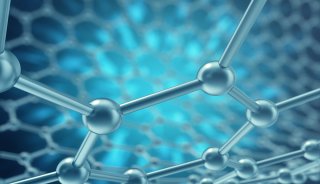PCR基因芯片上荧光PCR反应的研究(五)
3.讨论
随着近年基因芯片技术的发展,研究者逐渐认识到基于核酸杂交原理的传统基因芯片缺陷与应用的局限性。随着PCR技术的进展,特别是荧光定量PCR技术的出现PCR技术已成为生物医学领域中应用最广泛的技术。如果一种基因芯片能直接进行PCR反应,而且能够同时扩增大批可能发生变异的基因显然会有广泛的用途。我们与微电子所合作,利用其微加工能力,首次建立含有数百上千微反应池的PCR基因芯片。近年来荧光PCR方法有所发展,我们设想在如果芯片上设置多个微反应池进行荧光PCR反应,通过检测芯片上荧光的变化来确定反应结果,可以免去电泳等繁琐的检测过程,并且可在不同反应池中同时进行多个反应。PCR反应在芯片内极小容积的微反应池中进行,每个微反应池均可以将其内部的基因扩增数百万倍,解决了常规PCR一次仅仅可以分析一种或者少数几种基因的不足。微反应池内的反应介质的量仅为普通PCR一次反应的量,也会大大节约试剂开支。
PCR基因芯片的研制面临重要问题是在仅数十纳升的微反应池中能否进行微量的荧光PCR反应?荧光的变化能否准确检测?如何选择用于不同用途的PCR反应类型?
我们利用临床病例和正常人实际例证,探讨利用Taqman探针和SYBR Green荧光染料在PCR基因芯片上做荧光PCR反应的可行性。
TaqMan荧光探针是特异合成的寡核苷酸序列[9],其5’、3’分别标有荧光报告基团(如FAM)、荧光淬灭基团(TAMRA)。在PCR扩增前,TAMRA通过Föster能量迁移(FRET)作用,抑制FAM的荧光发射。如PCR产物中有靶序列存在,则在PCR扩增的延伸阶段,Taq酶通过其5’→3’外切酶活性将结合的TaqMan探针切断,FAET抑制作用被解除,后者的荧光信号得以释放出来,模板DNA每复制一次,就有一个荧光信号被释放[10-11]。我们所设计的检测遗传性铁幼粒细胞贫血家系G514A点突变的探针,结果证明这类反应能在PCR基因芯片上顺利反应。在结果图中可以看出阴性与阳性结果之间差别仍很明显。但是,TaqMan荧光探针的应用仍然存在问题,大量合成TaqMan荧光探针会十分昂贵,平衡大量PCR反应的条件也是很困难的事。我们又试用荧光染料SYBR
Green。SYBR
Green可以与双链DNA结合。在PCR过程中,随着扩增过程的进行,双链PCR产物不断增多,越来越多的荧光染料与双链DNA结合。收集结合到双链DNA上的SYBR
Green荧光信号就可以直接检测各种PCR产物的量。我们用SYBR
Green荧光染料和位点特异PCR反应检测HLAA2与非A2,说明这一类型的荧光PCR反应能在芯片上应用。
TaqMan探针荧光PCR反应与SYBR Green荧光染料PCR反应各有其优缺点。SYBR
Green荧光染料主要优点是不用针对每个PCR反应设计探针等,缺点是其特异性较差,原因是SYBR
Green是非选择性的与双链DNA结合。幸运的是通过测定解离曲线可以排除假阳性结果。用PCR芯片检测肿瘤融合基因类型的工作中,如果无法设计数百个Taqman探针对不同的融合基因进行检测,那么SYBR
Green荧光染料PCR反应则是很好的选择。可以事先在芯片上点上检测不同融合基因所需要的引物,然后将包括SYBR
Green荧光染料的反应液加入,检测一个样本多个不同融合基因的变化。
我们将芯片技术与荧光PCR技术相结合,利用TaqMan探针与SYBR
Green荧光染料检测在微反应池内获得的极其微量PCR产物。用一些临床标本实例,观察在基因芯片上进行不同的荧光掺入PCR反应,发现这些荧光PCR反应可以在芯片上顺利进行,可以根据基因芯片上荧光的变化判断基因的变异。为PCR基因芯片的临床应用打下了基础。
参考文献
1 Brown P, Hartwell L. Genomics and human disease-variations on variation. Nature Genetics, 1998, 18 (1):91-93
2 Strachan T, Abitol M, Davidson D,et al. A new dimension for the human
genome project: towards comprehensive expression maps. Nature Generics,
1997, 16(3): 126-132
3 Rowen L, Mahairas G,Hood L. Sequencing the human genome. Science, 1997,278 (5339): 605-607
4 Fodor,S.P.A.,Read,J.L.,Pirrung,M.C.,Stryer,L.,Lu,A.T.,et.al.
Light-directed,spatially addressable parallel chemical synthesis.
Science, 1991,251,767-773
5 Lockhart DJ, Dong H, Byrne MC, et al. Expression monitoring by
hybridization to high-density oligonucleotide arrays. Nature Biotechnol.
1996, 14:1675-1680
6 Khan J, Saal LH, Bittner ML, et al. Expression profiling in cancer using cDNA microarrays. Electrophoresis 1999, 20: 223-229
7 Xiaomei Yu. PCR microchip arrays based on silicon micromachining and
polymer bonding technique. 3rd International IEEE Conference on Polymers
and Adhesives in Microelectronics and Photonics.HOTEL EDEN AU LAC -
MONTREUX - SWITZERLAND, 2003:20-23
8 S.A.Gatz, H.Pohla, D.J.Schendel. A PCR-SSP method to specifically
select HLA-A*0201 individuals for immunotherapeutic studies. Tissue
Antigens 2000,55:532-547
9 Livak KJ, Flood SJA, Marmaro J et al. Oligonucleotides with
fluorescent dyes at opposite ends provide a quenched probe system useful
for detecting PCR product and nucleic acid hybridization. PCR Meth
& Appl. 1995, 4: 357-362
10 Becker K., D. Pan, C.B. Whitley. Real-time quantitative polymerase
chain reaction to assess gene transfer. Hum. Gene Ther. 1999,10:
2559-2566.
11 de Kok, J.B., Hendriks, J.C ,et al. Use of real-time quantitative PCR
to compare DNA isolation methods. Clin.Chem. 1998,44:
2201-2204Experimental study of fluorescence PCR on PCR chips
(HAO Lin) ZHU Ping1)* YU Xiao-Mei2) ZHANG Da-Cheng) ZHAO Xin-Sheng OUYANG
Jian-Hua)
(1)Peking University First Hospital Beijing 100034;
(2)Department of
Microelectronics , Peking University Beijing 100871;
(3)College of Chemistry and Molecular Engineering , Peking University
Beijing 100871) Abstract Objectives: To prove if fluorescence PCR which
is used for different purposes can be carried through successfully on
PCR chips and whether the changes of fluorescence can be detected. To
compare the advantages and disadvantages of different methods of
fluorescence PCR. Methods: We designed and fabricated a PCR gene chip,
which is made of silicon wafer. A point mutation was identified by using
SSCP and sequencing a hereditary X chromosome linked sideroblastic
anemia family. A Taqman probe specifically to detect this point mutation
was designed and used in fluorescence PCR. We carried out the
fluorescence PCR on a gene chip and in tubes, and compared the results
from the two methods. We also used the 4 steps of site-specific PCR and
SYBR fluorescent staining to detect HLA-A2 on the chip and compared the
results with that from routine method. Results: A silicon PCR gene chip
was designed and fabricated which contains 192 reaction chambers. The
point mutation of G514A in the exon 5 of ALAS2 in a hereditary X-linked
sideroblastic anemia family was confirmed by PCR-SSCP and seqencing. The
results of the 6 members in the anemic family and 2 normal male
newborns using Taqman probe we designed and the fluorescence PCR on chip
were the same as those form routine method. The results of the routine
SYBR fluorescent staining PCR and the reactions on chip were consistent
with the expectations. Conclusions: Taqman fluorescence PCR can be
carried out successfully on the chip and is suitable for the detection
of point mutation and single nucleic polymorphorim. Fluorescence PCR
with SYBR fluorescence staining can be performed on the chip and may be
useful for the screening of fusion genes in cancer samples.
Keywords: PCR chip; Fluorescence PCR;Taqman probe;SYBR fluorescence staining;
-
焦点事件









